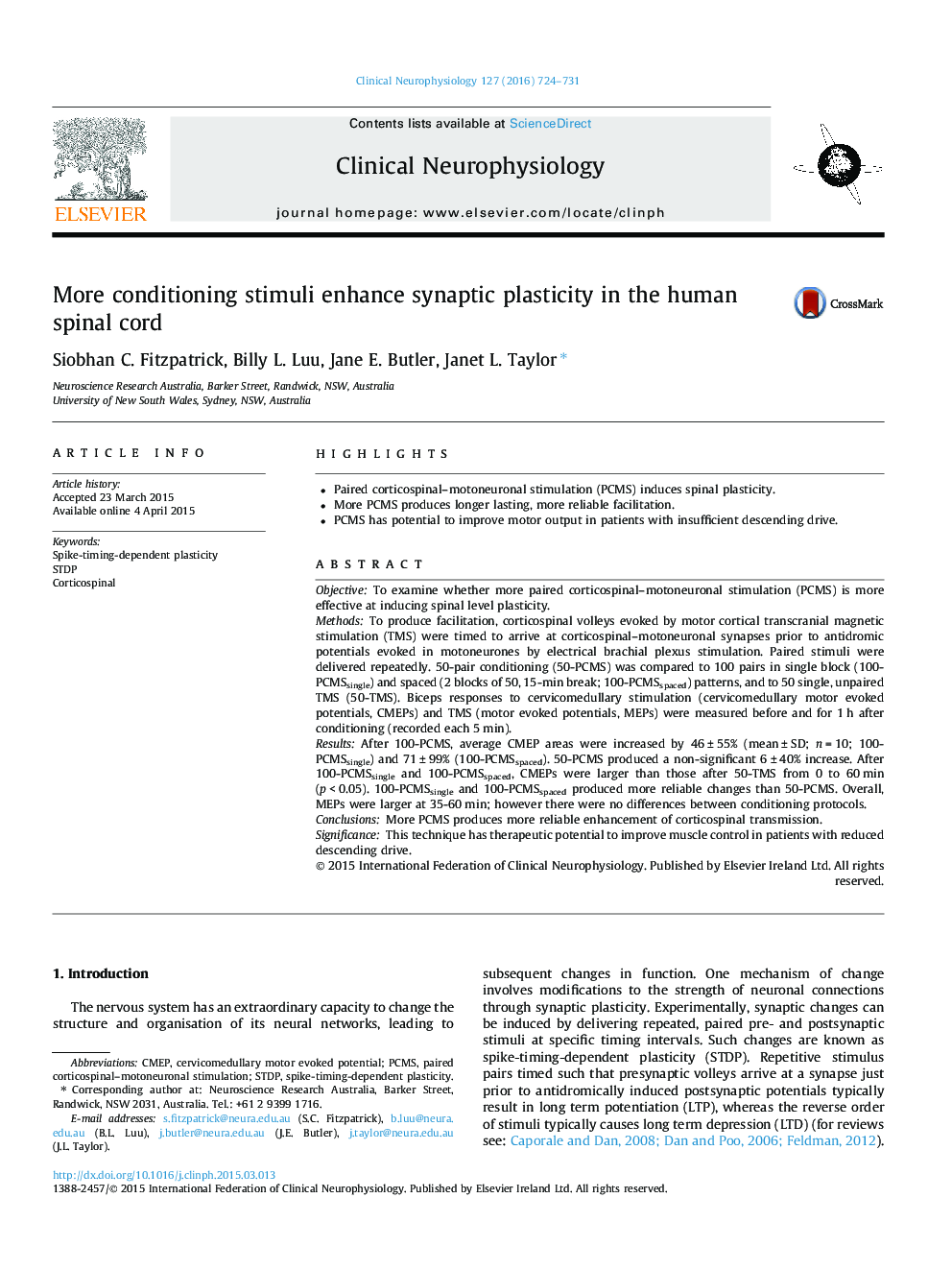| کد مقاله | کد نشریه | سال انتشار | مقاله انگلیسی | نسخه تمام متن |
|---|---|---|---|---|
| 6007974 | 1184960 | 2016 | 8 صفحه PDF | دانلود رایگان |
- Paired corticospinal-motoneuronal stimulation (PCMS) induces spinal plasticity.
- More PCMS produces longer lasting, more reliable facilitation.
- PCMS has potential to improve motor output in patients with insufficient descending drive.
ObjectiveTo examine whether more paired corticospinal-motoneuronal stimulation (PCMS) is more effective at inducing spinal level plasticity.MethodsTo produce facilitation, corticospinal volleys evoked by motor cortical transcranial magnetic stimulation (TMS) were timed to arrive at corticospinal-motoneuronal synapses prior to antidromic potentials evoked in motoneurones by electrical brachial plexus stimulation. Paired stimuli were delivered repeatedly. 50-pair conditioning (50-PCMS) was compared to 100 pairs in single block (100-PCMSsingle) and spaced (2 blocks of 50, 15-min break; 100-PCMSspaced) patterns, and to 50 single, unpaired TMS (50-TMS). Biceps responses to cervicomedullary stimulation (cervicomedullary motor evoked potentials, CMEPs) and TMS (motor evoked potentials, MEPs) were measured before and for 1 h after conditioning (recorded each 5 min).ResultsAfter 100-PCMS, average CMEP areas were increased by 46 ± 55% (mean ± SD; n = 10; 100-PCMSsingle) and 71 ± 99% (100-PCMSspaced). 50-PCMS produced a non-significant 6 ± 40% increase. After 100-PCMSsingle and 100-PCMSspaced, CMEPs were larger than those after 50-TMS from 0 to 60 min (p < 0.05). 100-PCMSsingle and 100-PCMSspaced produced more reliable changes than 50-PCMS. Overall, MEPs were larger at 35-60 min; however there were no differences between conditioning protocols.ConclusionsMore PCMS produces more reliable enhancement of corticospinal transmission.SignificanceThis technique has therapeutic potential to improve muscle control in patients with reduced descending drive.
Journal: Clinical Neurophysiology - Volume 127, Issue 1, January 2016, Pages 724-731
